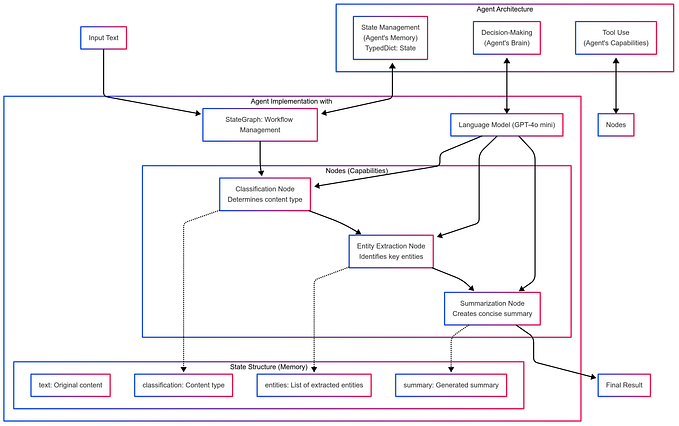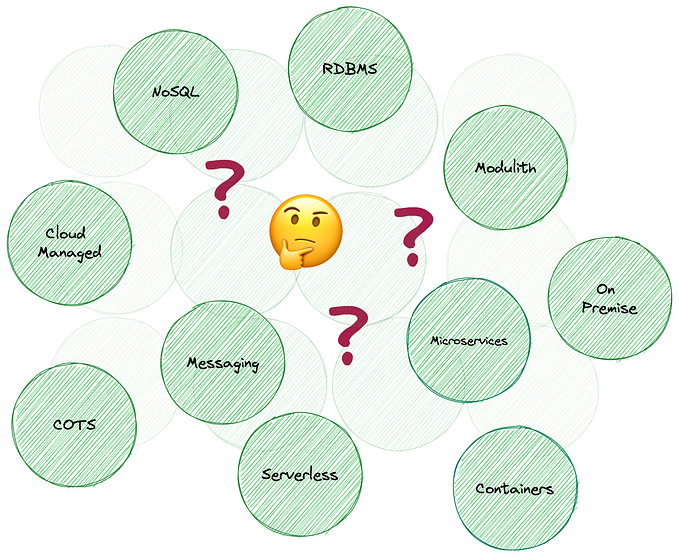Unraveling the Origin of Life through the Loop-Centric Model and Systems Engineering
From the standpoint of a systems engineer, I am exploring the origins of life based on the principles of systems engineering.
As part of my personal research, I have been considering a model of processing loops in recent days.
In this article, I will clarify the definition and characteristics of this model. By re-examining the origins of life from the perspective of a model centered on processing loops, I will bring the nature of life into sharp relief.
Inside the Processing Loop
First, I will explain the model of the processing loop using Figure 1.

In one process, a catalyst is used to alter the inputted material and output it as a different material. The material outputted from that process is inputted into another process. This links in a chain-like fashion, forming a loop when it completes a full cycle.
There are links from catalyst to catalyst, through which materials move. However, some mechanism is needed to move the material on the link. This mechanism is called a carrier. The loop can produce the carrier itself, or it can use an existing mechanism as an external carrier.
Also, energy is required when changing materials with a catalyst. Similarly, energy is needed for the carriers moving the materials.
Energy and materials can be supplied from outside the loop, and energy and materials can leave the loop. For simplicity, all energies are omitted in the figures in this article.
Note that since catalysts are also materials, there may be cases where materials that become catalysts are included in the output of the loop’s process or are taken in from outside.
Moreover, the output material produced inside the loop can be stored. This material can be broken down as needed and used as input for processing. If energy was stored when it was produced, the stored energy is released when it’s broken down.
Loop Integration
From outside the loop, it receives energy and input materials. Moreover, materials that have been altered by processing may be expelled from the loop.
Therefore, from the outside, the loop simply looks like a single catalyst.
Therefore, once a loop is formed, it can easily be incorporated into another loop just like a catalyst.
We will call this “loop integration”.
Figure 2 shows an image of loop integration. In this figure, Loop A shown in the previous Figure 1 is integrated into Loop B.

The fact that an existing loop can be integrated into a new loop means that the overall system can be seen as incrementally increasing loops. Once Loop A is formed, it can form Loops B and C that incorporate A. Then, it is also possible to sequentially form loops, like Loop D incorporating B, and Loops E and F incorporating both C and D.
Loop Replacement
When Loop X is formed based on Loop A, upon closely examining the junction between Loop X and Loop A, they might share the same catalyst or have catalysts in close proximity.
Furthermore, in such cases, the inputs and outputs to that junction might be common between the original Loop A and the newly formed Loop X. When two loops are in this relationship, Loop A may cease to function for some reason, and only Loop X continues to function.
At this time, even before A stops, or even when only X is active after A stops, the chain of processes continues in the same way between the initial and final catalysts.
From Loop B’s perspective, which had the section of Loop A as its junction, it seems that after Loop A ceases to function, it is replaced by Loop X. This means that Loop B, which originally derived and depended on Loop A, can continue processing even without Loop A.
We will call this “loop replacement”. Figure 3 shows an image after loop replacement. Compared to the previous Figure 2, Loop X has been integrated into Loop B in place of Loop A.

Evolution of Loops
When focusing on Loop B, which is in the middle of the loop dependencies, a new Loop C may be formed by incorporating Loop B, or Loop A, which Loop B incorporates, might be replaced by Loop X. This means that a new loop can be formed in either direction of the dependency.
Processing loops can potentially become self-reinforcing feedback loops. As a result of the processing loop, the number of catalysts may increase, enhancing processing capacity and fault tolerance, or more input and energy may be acquired than in the original state, thereby enabling self-reinforcing loops to exist.
Because self-reinforcing feedback loops exist, loops with higher processing capability and fault tolerance naturally continue to prevail. Through repetitive formation of new loops and destruction of loops with low fault tolerance, individual loops evolve and the whole system develops as a collection of efficient loops with high fault tolerance.
At this time, even if a loop with low fault tolerance is destroyed, the fact that a group of loops in a dependency doesn’t get destroyed due to the replacement of the loop is a significant advantage of this system. This is because the evolution of loop groups formed over basic loops can continue without becoming wasteful.
Comparison with System Development
This replacement of loops is reminiscent of refactoring in the world of software and system development. Refactoring is a method of maintaining existing functionality without destroying it while improving the system’s efficiency, performance, and adding new features. Replacing loops, like refactoring, allows for efficiency and functional expansion while keeping other loops that depend on a certain loop alive.
Moreover, incorporating loops is akin to integration in software and system development. If an existing software or system provides an interface for external use, another system can utilize its functionality. Connecting a system that provides such an interface and a system that uses it is system integration. Through integration, by utilizing existing systems, it’s possible to efficiently realize more advanced functionalities without creating everything from scratch.
The benefits of refactoring and integration in system development apply to the replacement and incorporation in the evolution of loops. Thinking in this manner, it’s easy to understand that the best practices of software system development conceived by humans can similarly apply to systems like collections of processing loops.
Independence of Process Loop Groups through Cyclic Dependency Structures
When multiple loops form dependencies, and loop replacement is possible, it implies that the dependencies among these loops can form a cyclic structure.
Let’s say loop A is initially formed, which is then incorporated into loop B, followed by loops C and D in a chained dependency. If loop D can function as a replacement for loop A from the perspective of loop B, then by excluding loop A, the dependencies among loops B to D become cyclic.
We will refer to this as “loop independence.” Figure 4 illustrates this concept of loop independence from Step 1 to Step 3.

From this, we can understand that while all the loops initially depended on loop A, groups of loops can transition to an independent state. If such cyclic dependencies keep forming, a diverse set of loops, independent of each other, can coexist.
Self-sufficiency away from External Carriers
In our initial loop model, we mentioned that carriers are needed. Carriers are the means of transporting substances across links between catalysts within a loop. Carriers can borrow external forces, but they can also be produced using the properties and energy of substances formed by the loop.
Even if the initial loops relied on external forces for carriers, loops formed in dependence on them might eventually produce carriers through their own means.
When the dependencies among loop groups form a cyclic structure and become independent, and at the same time, none of these loop groups rely on external carriers, we’ll call this “self-sufficiency away from external carriers.”
This is illustrated in Step 4 of the aforementioned Figure 4. In this figure, while loops A and B depend on external carriers, loops C, D, and E produce their own carriers. Therefore, when loops C, D, and E form a cyclic structure and become independent, they can be said to be self-sufficient away from external carriers.
Comparison with Programming and Software Systems
Both the circulation of carriers and the processing loop are cycles; the former is a physical cycle, and the latter is a semantic cycle. In the world of programming, these correspond to syntax and semantics, respectively. In software systems, it corresponds to the difference between physical and logical structures. Typically, physical structures concern hardware groups, while logical structures involve software groups’ designs.
However, in the world of systems, the advancement of virtualization technology, which simulates hardware with software, has brought a turning point. Concepts like “software-defined” and its applied technologies, which allow defining and flexibly changing physical structures through software, have rapidly become widespread.
Examples include software-defined networks that change the structure of communication networks independent of physical wiring, software-defined infrastructures including servers and storage, and software-defined vehicles in automotive systems. This approach is expanding in various ways.
Comparing the concept of loops producing carriers internally, transitioning from relying on external carriers, with the “software-defined” concept can enhance understanding. Loops can simulate physical structures virtually, not relying on external carrier hardware, and form a flexible carrier cycle.
As a result, the entire loop group can control various sizes, timings, branches, and confluences without being bound by the structure of external carriers. This indeed offers the flexibility similar to software systems, allowing the formation of diverse loop groups.
Evolution Mechanism Based on the Processing Loop Model
The processing loop model is a powerful abstract model that can be applied to various fields such as computer-based systems, supply chains in industrial product manufacturing in economics, and food chains or symbiotic relationships in ecosystems.
The embedding or replacement of loops can be done intentionally by human design or can occur due to natural random changes. This is because loops can form self-reinforcing feedback loops.
Loops utilizing natural random changes are created, and based on the principle of natural selection, those with higher adaptability survive. Therefore, even under natural random conditions without human intervention or intelligence, the loops within this processing loop model continue to evolve to be more suited to the environment.
The evolution mechanism based on this processing loop model does not require DNA like organisms or intelligence like knowledge. The only requirement is the formation of a self-reinforcing loop.
Applying the Processing Loop Model to the Origin of Life
Because this mechanism doesn’t need DNA or intelligence, it can be applied to chemical evolution at the origin of life, before organisms appeared.
Here, I will outline my hypothesis about the origin of life based on this loop model.

(Top figure: Utilizing the water cycle, Bottom figure: Self-sufficiency away from the water cycle)
Even in ancient Earth, there was a water cycle. Water flows along rivers, through ponds and lakes, and reaches the sea. Then, it evaporates to form clouds and returns as rain to ponds, lakes, and rivers. This cycle can transport materials.
Initially, various ponds and lakes accumulated substances that could act as catalysts. These substances were linked through the water cycle, enabling the formation of loops. There’s a possibility that loops with self-reinforcing feedback properties emerged using numerous rivers, ponds, and lakes on Earth.
Based on the first self-reinforcing feedback loop, another loop incorporating it is formed. The top figure in Figure 5 illustrates this idea. Loop A is formed first, followed by Loop B.
Afterward, numerous loops are formed, and as dependencies branch or chain, more complex and advanced groups of loops can be generated. Through loop replacement, the efficiency and resilience of foundational feedback loops improve.
Apart from the loops that use Earth’s water cycle as a carrier, loops emerge that use substances produced within the loop or stored energy to create their own carriers.
And during the loop replacement, some loops will have cyclic dependencies. As a result, groups of loops that can exist independently from the existing loops are born. Among these independent groups, some loops can produce their own carriers.
Thus, the groups of loops that have successfully become independent from the external carrier of the water cycle become entities that can exist independently from the water cycle. The cyclic dependency structure of Loop groups C, D, and E in the bottom figure of Figure 5 represents this concept.
This is my conception of the origin of life.
And the cyclically dependent loop groups that became self-sufficiency away from external carriers represent the form of life from the perspective of the processing loop model.
In Conclusion
Living cells require substances that can store energy like sugars and fats, cell membranes to protect the inside from the outside, DNA for self-replication, and various other organelles essential for survival. Functionally, they must be able to metabolize, maintain themselves, absorb nutrients from the environment, and reproduce through self-replication.
I believe that such highly advanced and complex cellular structures and functions represent a culmination of life on Earth. However, my hypothesis suggests that this might not be the starting point.
The loop that uses the external carrier of the water cycle is the starting point. And I view the loop groups that could become independent from that external carrier as the first form of life. This concept suggests that as they continued to evolve, they produced the materials and organelles required by cells.
I cannot specify what kind of chemical groups and structures satisfied the conditions of the first life. This is merely a hypothesis resulting from the logic built on the perspective of the processing loop model and considering the environment of ancient Earth.
Nevertheless, as contrasted with the concepts of system development and software systems in the main text, this hypothesis fits very well as a systemic mechanism. For me, who is exploring life from a systems engineer’s perspective, it serves as a highly attractive model and mechanism explanation.






